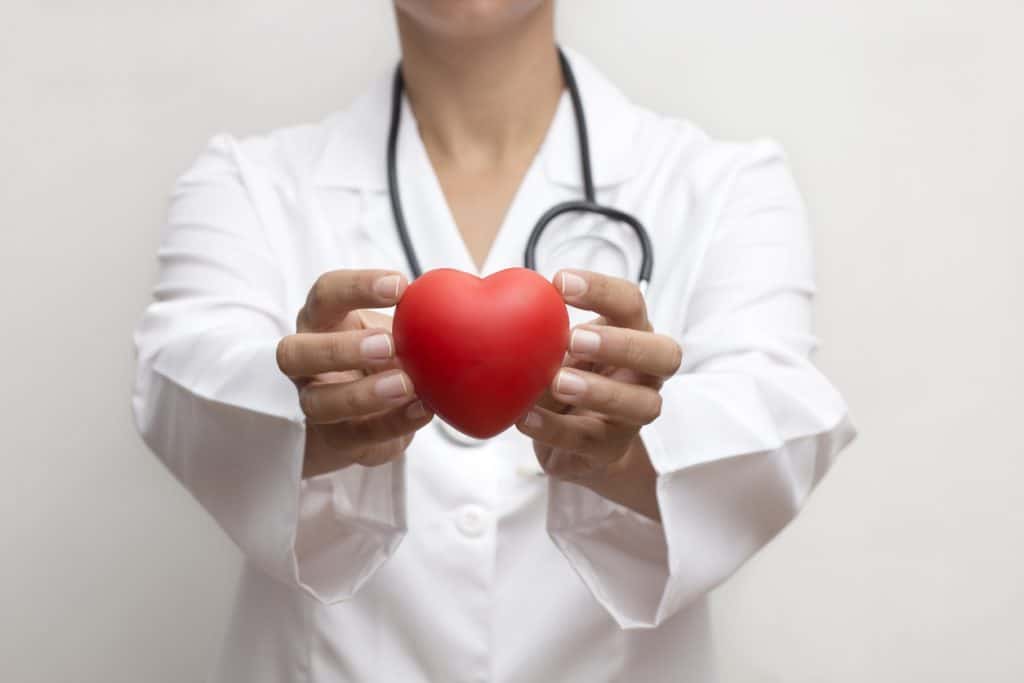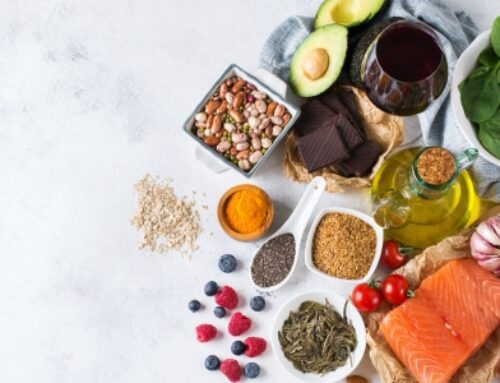
You’re busy! Life is hectic and you’re trying to juggle work, family, social commitments and a bit of time for yourself as well. Frankly there aren’t enough hours in the day.
In the midst of all that, you’re trying to be healthy, make good food decisions and move your body. You think you’re doing a reasonable job. Good on you!
But how do you know if you’re actually on the right track? Getting a blood test can help us understand what’s going on inside your body. We can figure out if all your efforts are making a difference or if there are pieces of the puzzle that are missing.
High total cholesterol
What does it tell us?
Something’s not quite right.
Our total cholesterol measures both our HDL (healthy) cholesterol and LDL (lousy) cholesterol. Having high total cholesterol is usually an indicator that one of these is out of whack but it doesn’t really indicate what impact it’s having on our health.
We need to find out more.
We need to have a look at the different types of cholesterol to get a better picture of what’s happening in your body. If you have ever had a blood test and been told that your ‘cholesterol is high’, it is absolutely worth asking for the full results of the test, or getting tested again through The Healthy Eating Clinic, so that you can make practical changes to your food and lifestyle.
High LDL cholesterol
What does it tell us?
You may have a build-up of fat on your arteries.
LDL’s job is to carry fats from your liver to all the parts of your body. The fats get used for all sorts of jobs including building cell walls, making hormones and fuelling your body’s tissues.
High LDL levels in your blood means that your body is not managing this process effectively and some of those fats are getting deposited on the sides of your blood vessels. If this is ongoing, the result is atherosclerosis, damage to the blood vessel, clots and blockages in veins and arteries. Yikes!
You might need to dial back on the cheese and fried foods.
High saturated fat intake can be a big contributor to high LDL cholesterol. The most common sources of saturated fats are the fats in meat, cream, cheese and food fried in animal fats.
- Track your intake of cheese and high saturated fat foods and see if there are any sneaking in where you weren’t expecting.
- Cut the visible fat off your meat and buy lean cuts.
- Swap to reduced fat cheese and use evaporated milk instead of cream in cooking.
You may need more fibre.
Fibre is the indigestible part of plant foods. It’s the skin on your apple, the husk of your grain foods and the outer part of your corn kernels (ever noticed how they go in one end and out the other unchanged?). Fibre is also the tiny parts of your food that absorb water and make it go all gluggy (think of oats). This glugginess is caused by insoluble fibre in particular, and soluble fibre helps your body get rid of some of the things we don’t want in our food including saturated fat and cholesterol. Boosting your fibre intake can have a considerable impact on LDL cholesterol.
- Load up ½ your plate with vegetables at lunch and dinner.
- Pair high fat foods with high fibre foods like quinoa, corn or high fibre breads and pastas.
- Swap to higher fibre versions of food products: whole meal bread, pasta, couscous, breakfast cereals, etc.
You may need to boost your activity.
Exercise makes our body more efficient at just about all its processes including helping to control cholesterol. When we use our muscles, we prompt them to burn more energy and some of that energy comes from fat. If our muscles are burning more fat than what’s delivered by LDL cholesterol it’s less likely to end up on the walls of your arteries.
- Find an activity you can enjoy and build that into your weekly plan.
- Squeeze in a few squats, crunches and push-ups in between tasks at work.
- Track your steps or the number of minutes you spend being active and try to increase each week.
Low HDL cholesterol
What does it tell us?
Your body is not effectively cleaning the fat from your arteries.
HDL cholesterol’s job is to bring the fats from all over our body back to the liver for processing. If we don’t have enough HDL cholesterol then our body can struggle to ‘mop up’ the fats that could be clogging our arteries. Low HDL cholesterol can leave us more at risk of developing atherosclerosis and clots in our blood vessels.
You might not be including enough plant fats and fish fats.
We are often told to boost our ‘good’ fats to help with our cholesterol, but what does that actually mean? In a nutshell, good fats are the ones that come from plants and fish, with the exception of coconut oil.
Plants fats are mostly made up of poly unsaturated and mono unsaturated fatty acids. Fish oils are also very high in poly unsaturated fats call Omega 3s. If we swap some of the saturated fats in our diet for unsaturated fats, we find that our LDL (lousy) cholesterol goes down and our HDL (healthy) cholesterol goes up.
- Swap to a canola or olive oil based spread instead of butter.
- Swap 1-2 red meat meals to a fish meal each week.
- Use small amounts of plant fats when cooking instead of butter. Rice bran oil, grape-seed oil, olive oil and peanut oil are all great options.
High triglycerides
What does it tell us?
You might be carrying a bit too much weight.
Most of the fats that our liver wants to send around the body are packaged up into LDL and HDL transporters. Triglycerides are the free-floating fats in our blood stream. When we are consistently eating more than we are expending through movement, our body tissues don’t need to burn as many fats for fuel. So, we find more of these free-floating fats in our bloodstream. This results in high triglycerides.
These high triglycerides are closely associated with other metabolic issues like high blood sugar levels, high blood pressure and cardiovascular disease. They all go hand in hand.
The good news is that even small amounts of weight loss can have a positive effect on triglyceride levels. Chat to one of The Healthy Eating Clinic practitioners about the best approach to weight loss for you and your lifestyle.
Your sugar intake might be a stumbling block.
If you’ve googled triglycerides then you have probably come across the recommendation to cut out sugars. There is a lot of buzz around the possible association between sugar (particularly fructose) and triglycerides. But this link becomes a bit unclear when we think about the other factors that affect triglycerides, particularly weight. Is it that sugar causes the high triglycerides or that sugar contributes to weight gain which causes high triglycerides? It’s hard to say.
What we can conclude is that most health markers are improved when we reduce our sugar intake and swap processed foods and sugary beverages for homemade, whole foods and water. So, reducing your sugar intake can also help to manage this cholesterol marker.
- Keep track of how many ‘sweet treats’ you have in a week and try and reduce that the next week.
- Swap sugary snacks for some low carb sweet treats.
You might need to include a fish oil supplement.
Omega 3s can have a positive effect on triglyceride levels. While we can get Omega 3s from a range of foods there is good evidence including a fish oil supplement is an effective strategy in lowering high triglycerides. This can be a simple adjustment to our routine that has a positive effect on blood markers. Pretty cool, aye?
If you have high triglycerides, try taking a fish oil supplement on a regular basis for a period of months, then by getting a follow up blood test with your GP you’ll be able to see if this small change has made a difference.
The bottom line
Different cholesterol measures can mean different things. The Healthy Eating Clinic dietitians can refer you for cholesterol tests and help you make the most effective changes to your diet. It’s a one stop shop.
If you’d like further help with your nutrition please click below:



